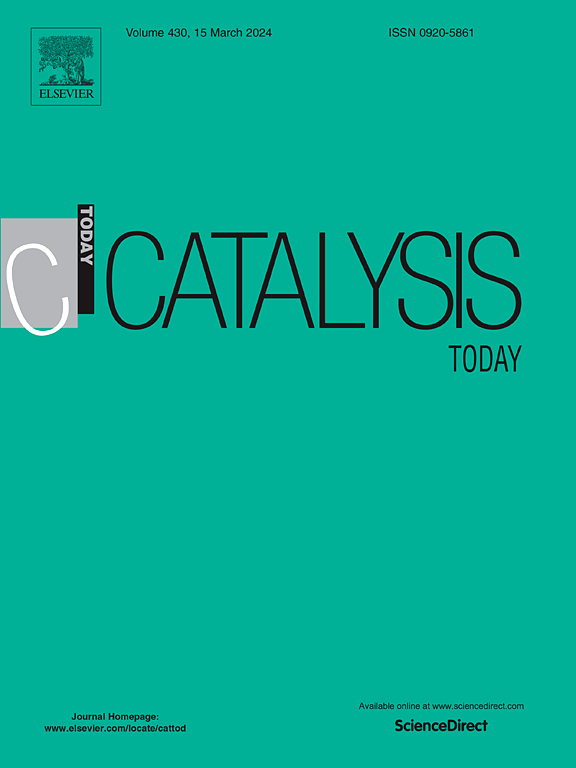基于镍(II)和钴(II)的二维混合金属-金属有机框架 (MM-MOFs) 用于电催化水分离反应
IF 5.2
2区 化学
Q1 CHEMISTRY, APPLIED
引用次数: 0
摘要
通过电催化水分裂产生氢气和氧气是实现可再生能源的一种可持续战略。然而,由于反应动力学缓慢,需要使用昂贵的铂(Pt)和二氧化钌(RuO2)/二氧化铱(IrO2)电催化剂,催化剂的高成本阻碍了水分离反应的实际应用。二维混合金属有机框架(2D MM-MOFs)已成为另一种有前途的电催化剂。在 MM-MOFs 中,金属中心在决定催化活性方面起着至关重要的作用。在几种用于水分离反应的 MM-MOFs 中,基于 Co(II) 和 Ni(II) 的 MM-MOFs 显示出巨大的潜力,使其成为高效、可持续的电化学能量转换和存储技术的理想材料。在此,我们将重点介绍在开发基于 Ni(II) 和 Co(II) 的二维 MM-MOFs 方面取得的最新进展,强调它们在氢进化反应和氧进化反应中的出色电催化性能。我们还讨论了有效设计和开发电催化剂的策略以及面临的挑战。本文章由计算机程序翻译,如有差异,请以英文原文为准。
Nickel (II) and Cobalt (II) Based 2D mixed metal-metal organic frameworks (MM-MOFs) for electrocatalytic water splitting reactions
Hydrogen and oxygen production from electrocatalytic water splitting offers a sustainable strategy towards achieving renewable energy. However, sluggish kinetics of the reaction require expensive platinum (Pt) and ruthenium dioxide (RuO2)/ iridium dioxide (IrO2)-based electrocatalysts where the high cost of the catalyst hinders the practical use of water splitting reaction. Two-dimensional mixed metal metal-organic frameworks (2D MM-MOFs) have emerged as alternative promising electrocatalysts. In MM-MOFs, the metal centers play a crucial role in determining the catalytic activity. Among several MM-MOFs explored for water splitting reaction, Co(II) and Ni(II)-based MM-MOFs have shown a significant potential, rendering them as promising materials for efficient and sustainable electrochemical energy conversion and storage technologies. Herein, we highlight recent advancements in the development of Ni(II) and Co(II)-based 2D MM-MOFs, emphasizing their outstanding electrocatalytic performance for hydrogen evolution reaction and oxygen evolution reaction. Strategies for the effective design and development of electrocatalysts along with the challenges are also discussed.
求助全文
通过发布文献求助,成功后即可免费获取论文全文。
去求助
来源期刊

Catalysis Today
化学-工程:化工
CiteScore
11.50
自引率
3.80%
发文量
573
审稿时长
2.9 months
期刊介绍:
Catalysis Today focuses on the rapid publication of original invited papers devoted to currently important topics in catalysis and related subjects. The journal only publishes special issues (Proposing a Catalysis Today Special Issue), each of which is supervised by Guest Editors who recruit individual papers and oversee the peer review process. Catalysis Today offers researchers in the field of catalysis in-depth overviews of topical issues.
Both fundamental and applied aspects of catalysis are covered. Subjects such as catalysis of immobilized organometallic and biocatalytic systems are welcome. Subjects related to catalysis such as experimental techniques, adsorption, process technology, synthesis, in situ characterization, computational, theoretical modeling, imaging and others are included if there is a clear relationship to catalysis.
 求助内容:
求助内容: 应助结果提醒方式:
应助结果提醒方式:


